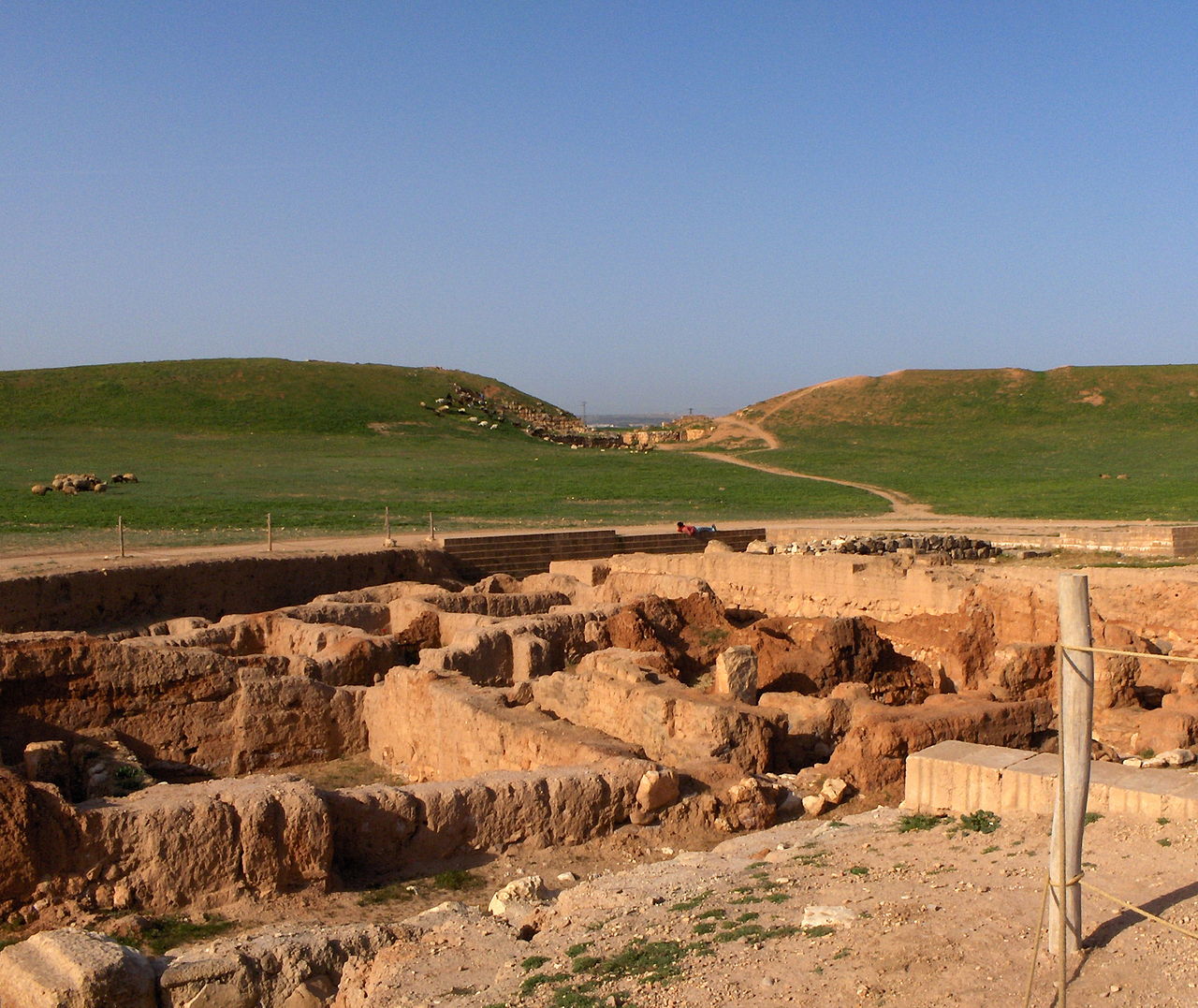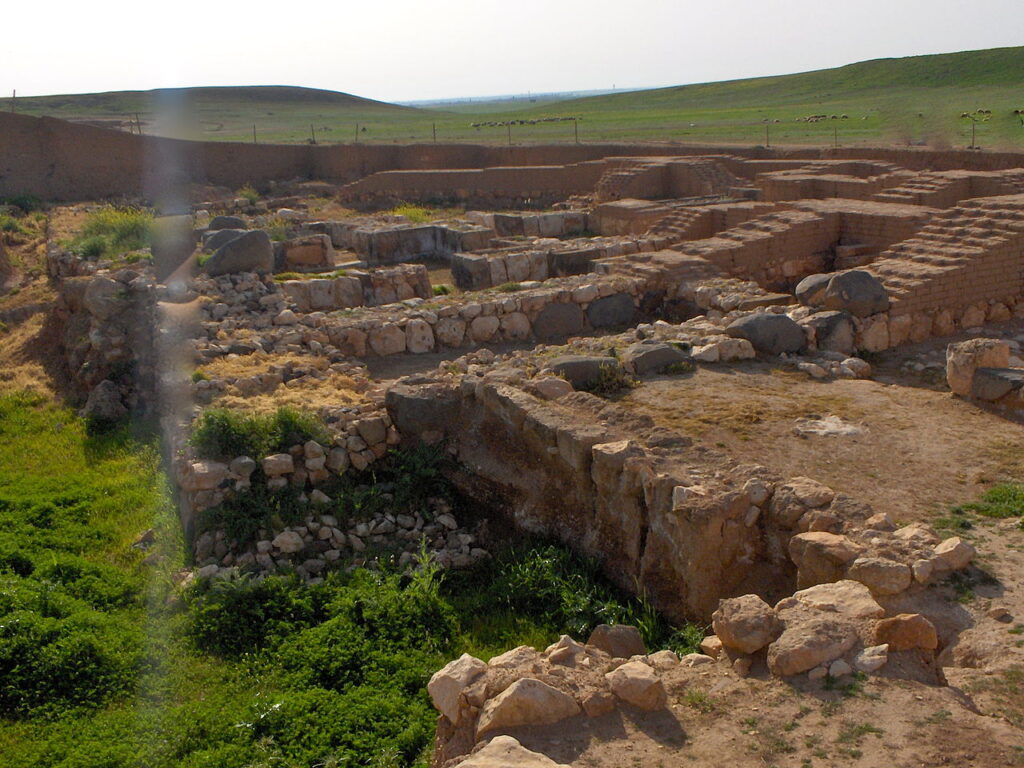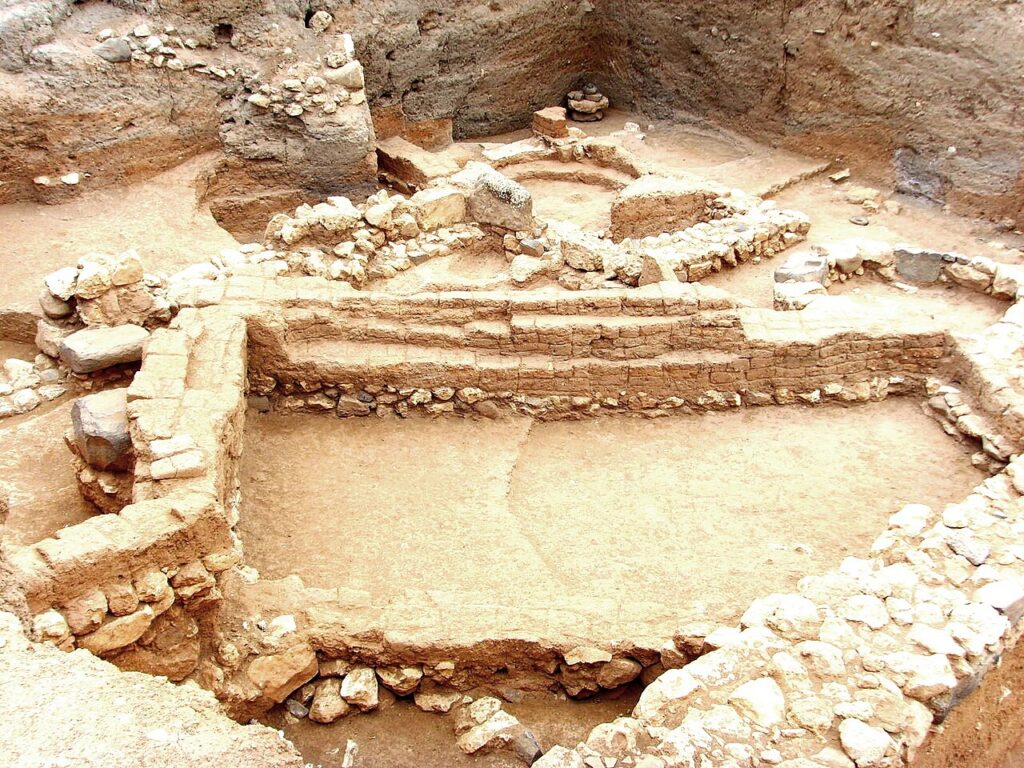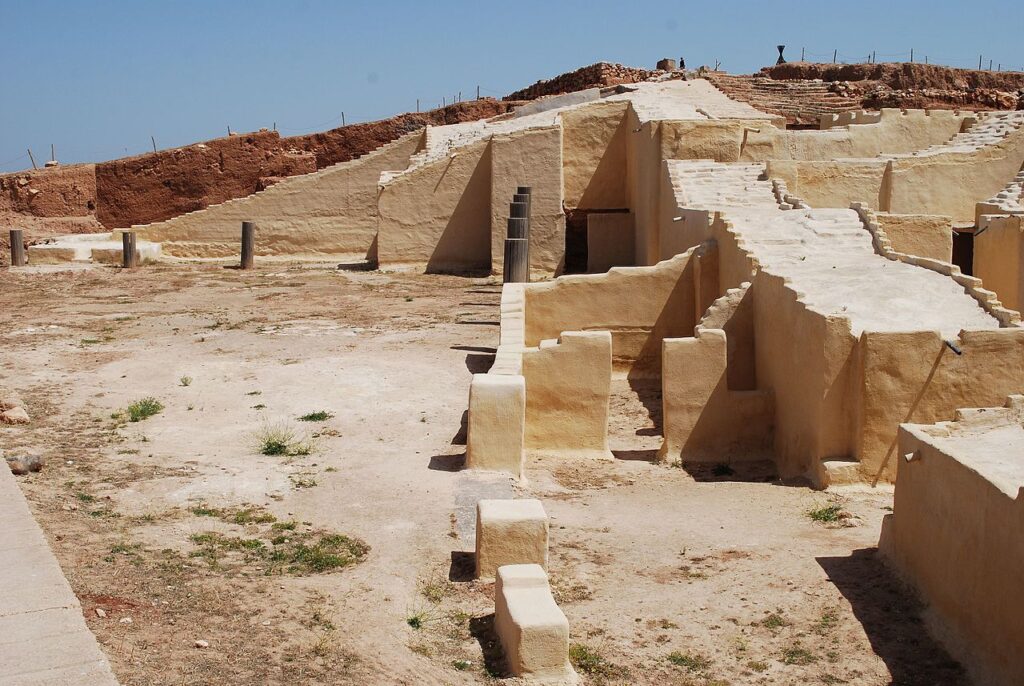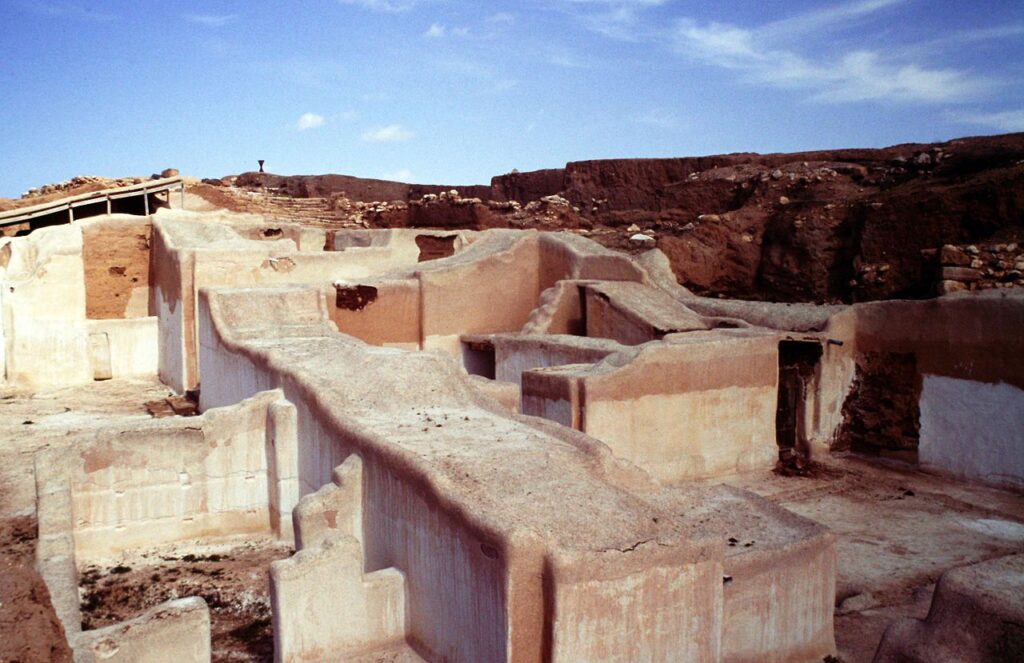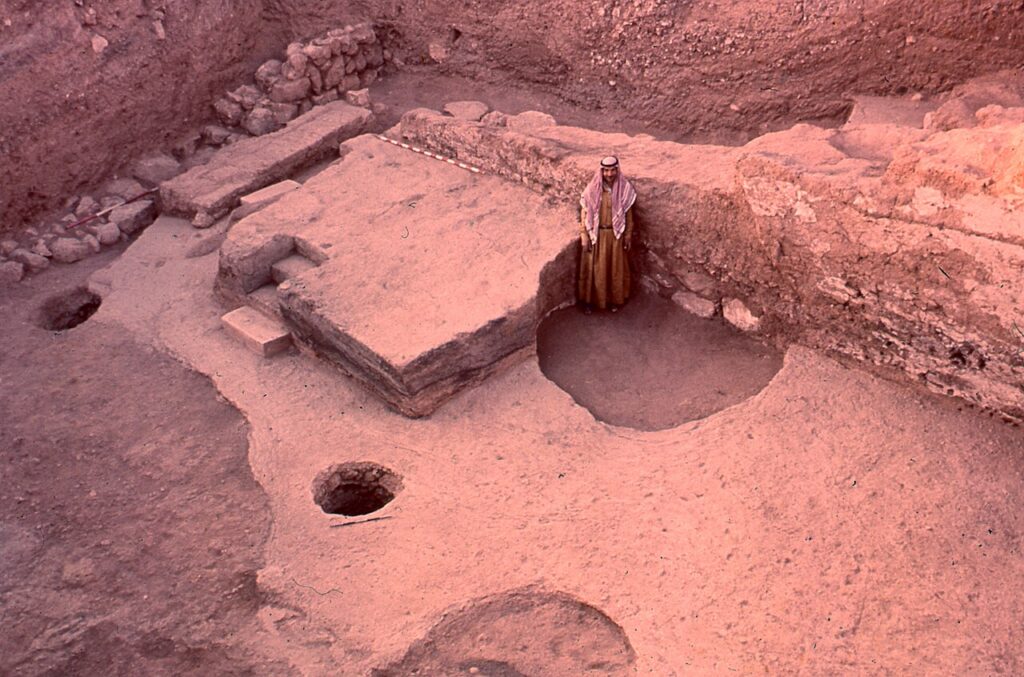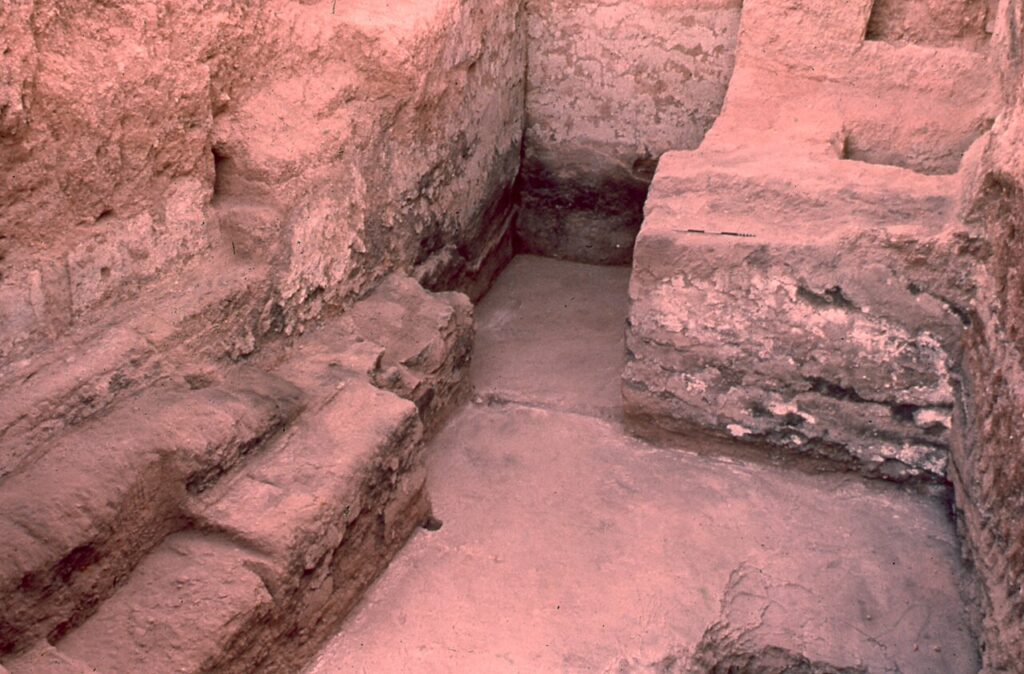The Ancient City of Ebla (Tell Mardikh)
Ebla is located atop Tell Mardikh in the eastern countryside of Idlib and represents one of the most important cultural centers of the Early Bronze Age. It was founded in 2400 BCE at a crossroads linking the Nile Delta with Mesopotamia, which made it a vital hub for international trade in goods such as timber, metals, and textiles.
Its fame peaked with the discovery of the Royal Ebla Archive in 1975: more than 17,000 cuneiform tablets revealing payroll records, tax lists, and power-balancing treaties with the kingdoms of Mari and Ugarit. This archive provides the oldest written evidence of a centralized administrative system in Syria and demonstrates an advanced level of economic and ceremonial organization.
The city witnessed successive military conflicts; it fell under Akkadian control, later regained its independence, and was eventually destroyed by the Hittites around 1600 BCE. Despite a long period of decline, the Italian mission (1964–2009) succeeded in recovering its key features: double defensive walls made of reinforced mudbrick, multi-courtyard palaces, and a network of stone drainage systems designed to prevent flash flooding.

